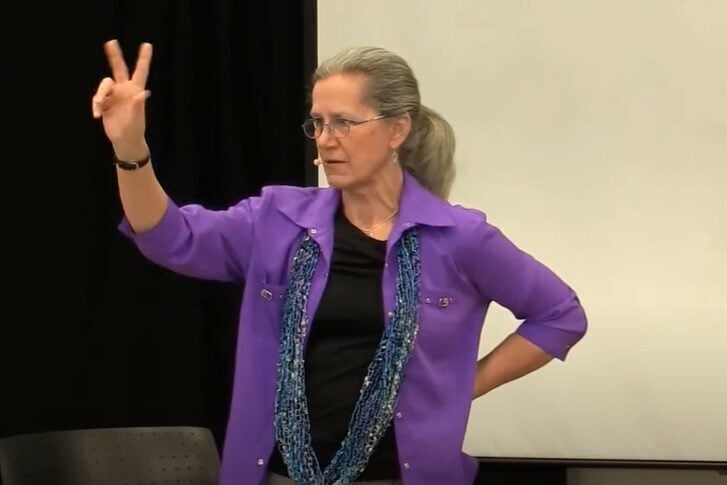One of the most important concepts during recovery after brain injury is neuroplasticity. This refers to the brain’s ability to rewire itself and create new neural connections.
Fortunately, the brain is incredibly resilient and possesses the ability to repair itself after a traumatic injury. This ability is known as neuroplasticity, and it’s the reason that many brain injury survivors can make astounding recoveries.
You’re about to learn how to harness neuroplasticity after brain injury to promote your highest recovery possible.
Finding Recovery Through Neuroplasticity After Brain Injury
For many decades the brain was considered a “nonrenewable organ.” Scientists believed we had a limited number of brain cells that faded as we aged.
We know now through advanced medical research that this isn’t the case. In fact, studies have indicated the opposite: Researchers have discovered that the brain is not static and it doesn’t stop changing as we age.
Our brains are constantly adapting to our experiences. Different pathways may form and others may fall dormant. New connections may be created while some may be discarded. This is because our neurons, the brain’s messengers, rely on the brain’s pathways and connections to deliver these messages that are responsible for function.
When the brain sustains damage, such as from a stroke or traumatic brain injury (TBI), many of these pathways can become damaged interfering with communication.Thus, without clear communication, the brain and body cannot function properly making it challenging for survivors to perform daily activities.
Fortunatelywith the help of neuroplasticity, communication can be restored and function regained.
Can the Brain Heal Itself After TBI?
So, can the brain heal itself from brain damage? Yes, absolutely, with the help of neuroplasticity!
Neuroplasticity allows the brain to create new pathways and strengthen existing ones. This allows functions from damaged areas of the brain to be taken on by other healthy areas. You can imagine it like this:
When you’re driving home from work and a street or freeway entrance has been blocked, your GPS may suggest an alternative route. This alternative route may not be one you are familiar with and it may even take longer, but it will still lead you home. The same concept can be applied to neuroplasticity.
Now you may be wondering how to activate neuroplasticity after brain injury.
Use it or Lose it: The Importance of Repetition
Neuroplasticity is best activated through repetition (or massed practice). As previously mentioned, our brains adapt to our experiences. Therefore when the brain notices a certain experience or action is constantly repeated, it’ll strengthen that pathway.
One of the goals with neuroplasticity is to become more efficient at daily living tasks like tying your shoes. The more you practice a certain task the stronger your neural connections become and the easier it’ll be to perform certain tasks.
For instance, to improve your ability to walk, you should practice walking short distances daily. If you have difficulty walking however there are leg exercises you can do to help with mobility. With more practice, this task may require less effort over time.
It’s important to practice impaired skills after a TBI to prevent loss of function altogether. For instance, if you lost function in your dominant hand and you usually eat with that hand, you may be tempted to substitute it and use your non-dominant hand instead.
However, in doing this, function in your dominant hand can potentially worsen due to neglect. To prevent this from happening you must actively use your dominant hand. This is where the popular phrase “use it or lose it” comes from.
Pushing Through Neuroplasticity Plateaus During TBI Recovery
During the first 3-6 months after a brain injury, the brain may enter what is known as a heightened state of plasticity. In this state the brain spontaneously repairs itself, helping make a rapid progress in your recovery.
Therapy may also have a much more visible impact during this time. This is of course an exciting time, but can be of great concern too. Some survivors may ask, is recovery still possible after the first 6 months?
Plasticity doesn’t stop after this heightened state, but it can decrease. During this decrease you may feel as if your recovery has stalled but do not be discouraged.
Therapists refer to these stalls as plateaus, and they are a common part of recovery after a brain injury. It may not be as evident but neuroplasticity is still happening past this initial stage as long as you continue to pursue rehabilitation and put in the repetitions on a consistent basis.
Consistency can go a long way. Even if results aren’t as immediate or prevalent as they were before, it’s crucial to practice repetition so that your brain can continue to heal itself.
Recovering from Brain Damage and Restoring Function with Neuroplasticity
However mild or severe your brain injury may be, there is hope in restoring lost functions with the help of neuroplasticity. The best way to boost neuroplasticity is through repetition and dedication.
Many of the neural pathways and connections damaged after a TBI often cause impaired functions. But with consistent practice you can make incredible improvements in your recovery, even after the initial stage.
Neuroplasticity after brain injury is not only essential for healing, but also living a productive, more independent life.
The post Can the Brain Heal Itself? Understanding Neuroplasticity After Brain Injury appeared first on Flint Rehab.
Original Article










